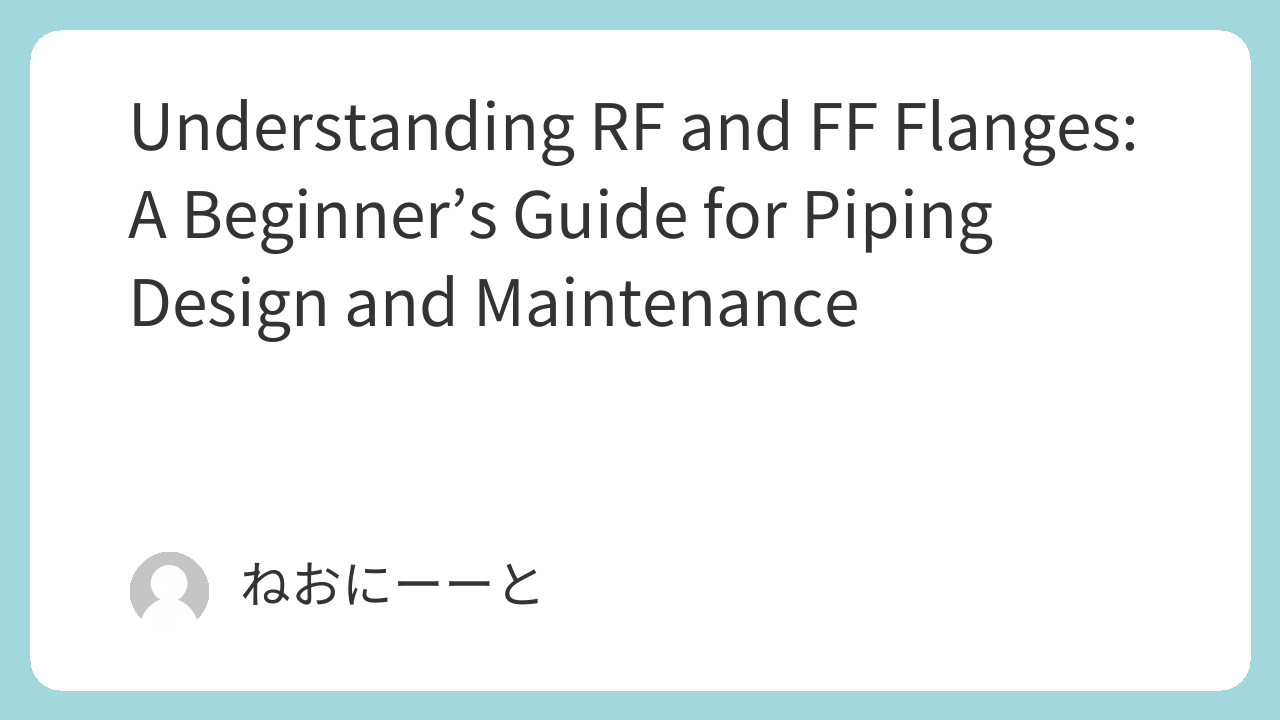In piping design and maintenance, the term “flange” frequently comes up. Among them, RF (Raised Face) and FF (Flat Face) flanges are the two basic types commonly used on-site. You might know these names, but still feel unsure about their differences or when to use which type.
This article explains the differences between RF and FF flanges in an easy-to-understand way, using illustrations and real-world examples. We’ll also cover their uses, advantages, and important points to help you choose the right flange for your project.
Beginner’s Guide to Flange Bolts: Stud Bolts vs Machine Bolts Explained Simply
Basic Methods of Connecting Flanges and Pipes
There are mainly three types of flange-to-pipe connections:
- Socket Weld: Simple and widely used in batch chemical plants.
- Butt Weld: Has a “neck” on the flange, providing higher strength, common in petrochemical plants.
- Loose Flange: Uses a stub end welded to the pipe with the flange loose, offering cost and adjustment advantages.
Flange Shapes and Categories
Flanges are broadly categorized into:
- FF (Flat Face) and RF (Raised Face): Standard types used mostly in low-pressure batch chemical plants.
- MF (Male-Female) and TG (Tongue-Groove): High-pressure types for higher sealing requirements, rarely used in batch plants.
What Is RF (Raised Face) Flange?
RF flanges have a raised sealing surface and are often used in high-pressure piping. The raised area is designed to improve sealing with the gasket.
What Is FF (Flat Face) Flange?
FF flanges have a flat sealing surface and are commonly used in low-pressure piping. They provide a broad gasket seating area.
Differences Between RF and FF Flanges
- Sealing surface pressure: RF flanges can generate higher surface pressure due to smaller gasket contact area.
- Gasket fit and misalignment: RF flanges are more sensitive to gasket misalignment, which can slightly reduce sealing area.
- Stress concentration: RF flanges have discontinuities that can cause localized stress; FF flanges do not.
- Cost: RF flanges typically cost slightly more than FF flanges.
- Usage in batch chemical plants: The differences are usually negligible in low-pressure environments, so both are often used interchangeably.
Gasket Types and Their Relation to Flanges
- RF gaskets typically have no bolt holes, making them cheaper and easier to remove.
- FF gaskets have bolt holes, suitable for vacuum piping or where gasket displacement must be prevented.
Practical Tips for Selection
- In batch chemical plants, it is common not to worry too much about RF vs FF differences.
- Proper gasket installation and bolt tightening are key factors for leak prevention, regardless of flange type.
Conclusion
RF and FF flanges are fundamental concepts in piping design. Although their structural differences exist, in many practical low-pressure chemical plant applications, the choice between them does not significantly affect performance. However, understanding their differences helps you make informed decisions and avoid potential leaks or maintenance issues.
If you’re involved in piping design or maintenance, keep this guide handy and refer to it whenever you select flanges for your projects.

Comments